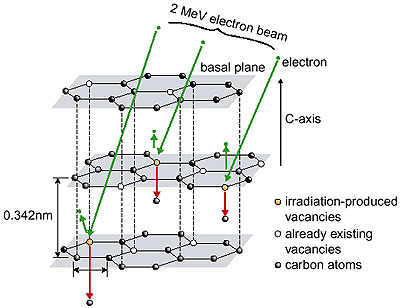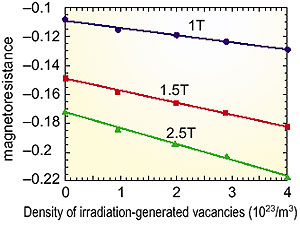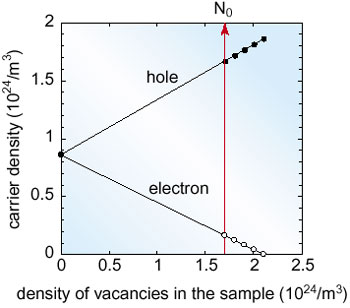Poorly graphitized carbon exhibits peculiar behavior for charge transport properties, namely that the electrical resistivity was found to decrease under a magnetic field.
This phenomenon is called "negative magnetoresistance." Usually, the resistivity of materials increases in a magnetic field. For a long time, the reason for negative magnetoresistance in pyrolytic carbons has been an open question. As can be seen in Fig. 6-8, pyrolytic carbons have a larger c-axis lattice parameter, and thus a more nearly two-dimensional (2D) electron system than those of highly graphitized samples. They also have random stacking of graphene planes, which induces a lot of lattice defects. To study the effects of lattice defects on the negative magnetoresistance, a controlled number of vacancies was added to the sample using electron irradiation, and the change in negative magnetoresistance was measured.
The result is shown in Fig. 6-9. As the vacancy density increases, the magneto-resistance becomes more and more negative. An analysis based on the experimental data suggests that the negative magneto-resistance can be understood in terms of the existence of a 2D electron system with vacancies (Fig. 6-10). The present study shows that lattice defects (vacancies) play an important role in the appearance of negative magnetoresistance in pyrolytic carbons. It also indicates that we can control electronic properties of materials by means of irradiation-generated lattice defects. Up to now, lattice defects have been considered to be an indication of material degradation. However, energetic particle irradiation and the consequent lattice defects can also be used constructively to modify the properties of materials. |



